When most people think of Korean food, they tend to think of Korean BBQ. From seafood to beef and pork, it is practically on every menu and every dish. While vegetarianism is not a common practice in Korea, it is becoming more popularized. Traditionally, this type of diet is associated with Buddhist monks, but anyone can be a vegetarian for various reasons. But what is a vegetarian?
Various points of view will distinguish vegetarianism as a diet containing no meat or meat by-products. However, they are not considered vegan as they can sometimes consume meat by-products such as dairy products. Vegetarianism focuses on healthy eating through high protein sources like beans and nutrient-rich veggies like spinach or broccoli. Many who choose this lifestyle do so for moral reasons such as respect for animal life. Another common reason for choosing this type of diet is for health reasons. A vegetable-rich diet does the body good. But where does this fit in with Seoul, South Korea?
History of Vegetarianism in Korea
To pinpoint an exact time frame as to when vegetarianism became known in Korea is difficult. In fact, the very concept of a vegetarian diet can be somewhat lost on the culture cross-over. While there are known vegetarian restaurants in South Korea these days, it is still not always conveyed correctly. If ordering a dish at a restaurant that is seemingly a vegetable dish, more than likely, there will be seafood in it. Seafood is a major staple in South Korea due to the abundance and availability of it. For example, kimchi is wildly popular, and it contains pickled cabbage, but generally can have salted shrimps as a natural preservative.
With this in mind, when visiting South Korea, it is essential to remember that when ordering dishes to very explicitly state not to add any meat products. This will ensure that the proper dish is being served. Otherwise, dishes like bibimbap (which can contain beef), or tofu stews (which usually have a form of seafood), will be served with those accompanying them.
Statistically, the rise of vegetarianism in South Korea has risen. Just in the last decade, the numbers have gone from about 150,000 to over 1 million documented veggie heads. Even with those numbers, it is not as common as one would think. In fact, true vegetarianism is linked to Buddhism and monks within South Korea. Although, there have been exceptions even within those boundaries.
Temple Food and the Buddhist’s Interest in Vegetarianism
Temple food, or food that is consumed by monks, has always been known as vegetarian. Monks follow this diet to stand with their views on it reducing world suffering. Some restaurants tend to serve temple food, and those converting to the meat-free side of things can appreciate this change.
However, Buddhist monks are not always within the boundaries of vegetarianism. While most of this type of diet is healthy, meat does include necessary nutrients. Meat can provide certain vitamins and antioxidants that are only food within the meat. This being the case, monks have been known to eat meat for health reasons. When ill, they must get the nutrients that are proper to get better.
Overall though, the choice of vegetarian diets among Buddhists and monks is directly related to religious practice and the prevention of distraction during meditation practices. There are even vegetables that are considered to be unfit for monk consumption. These include onions, garlic, chives, leeks, and green onions. These are highly regarded as being disruptive to the flow of meditation and the clouding of the mind. Therefore, they are avoided among the Buddhist communities, as meditation is a vital part of their practices.
This makes temple food take on a whole other meaning, especially for those outside of the Buddhist communities wishing to eat better. The emphasis of keeping a clear head can be practiced even outside of the religious aspects. Therefore, the adaption of ‘temple food’ has been a growing trend in those wishing to achieve optimal performance in life.
Buddhist monks may be quietly setting the vegetarian trend among the Korean culture. Their ease of access to healthy herbs allows them to creatively combine them into dishes otherwise not consumed by the general public. It demonstrates a level of dedication to their minds and their convictions. Out of this dedication has set the footwork in motion to land Korean culture on the map of vegetarianism and healthy eating. Some people would consider this holy eating to be of utmost importance.
Popular Vegetarian Restaurants in Seoul, South Korea
Whether its a tourist or a long-time resident of Seoul, there are choices of restaurants to experience the South Korean vegetarian scene. Below are some of the most popular places.
Cook and Book Cafe
With veganism and vegetarianism so closely related, this restaurant offers up a bit of both for its guests. This trendy and unique spot is a true gem to the health world. They feature a blog where the owner explores vegetarianism at its fullest, offers classes, and even sponsors a flea market for all things healthy. Their specialty in concerns to food is their desserts. Vegan based cakes and pastries are what they know best. All of their dessert items are elegantly decorated to perfection. This makes them especially unique because they allow their guests to indulge in baked goods as well as savory items.
A few of their most popular savory items include vegan corn chowder, avocado salad, napa cabbage stew, tofu marinades, lotus root, and pumpkin and many more. Some of their most popular dessert menu items are cakes with berries and creams and chocolates. The main attraction of this particular restaurant is its dedication to exploring all things vegetarian.
Address: 361-26 Hapjeong-dong, Mapo-gu, Seoul
Plant Cafe and Kitchen
This quirky location serves veggie burgers, lentil dishes, and a variety of wraps, salads, and pasta. They focus on bringing the vegetarian menu to their guests in healthy portions and ingredients. Lentils are a high protein source for a vegetarian diet and Plant Cafe and Kitchen puts lots of use to this powerful little bean. From veggie bowls to wraps, lentils are a staple here.
Even with lentils as a forefront, one of their most creative dishes is their spaghetti and “meatballs” option. The meatballs are formed using tempeh (panko, toasted) and mushrooms (a common meat substitute in vegetarian dishes). This Italian dish is a tasty diversion from typical meat bearing dishes of the Korean cuisine.
Another popular vegetarian and vegan food practice is making cheese sauce out of cashews. This is very trendy in the health world right now, and Plant Cafe is bringing that experience to their Korean residents. They create a mac n cheese dish with the sauce.
Address: 서울특별시 용산구 이태원1동 보광로 117
Gurkha
Since Korean cuisine is not very familiar to the vegetarian diet, many restaurants have emerged there offering other culture’s dishes. Indian culture is well-known vegetarian diet culture. Therefore, for a taste of India, Gurkha is a excellent choice. They serve many vegetarian dishes.
One of the most popular of the Gurkha dishes is the Naan, which is lightly fried bread dough served with various dipping condiments. They also serve dumplings with potatoes or vegetables, lightly steamed. Most of their dishes are noodle-based with veggies and broths.
Address: 16-1 Myeongdong 10-gil, Myeongdong 2(i)-ga, Jung-gu, Seoul
Sanchon
Following in the steps of the Buddhist community, Sanchon prides itself on providing mountain entrees that feature the vegetarian choices of monks. They are also a tea house, and their decor is beyond beautiful. Coming here will give guests a one of a kind experience.
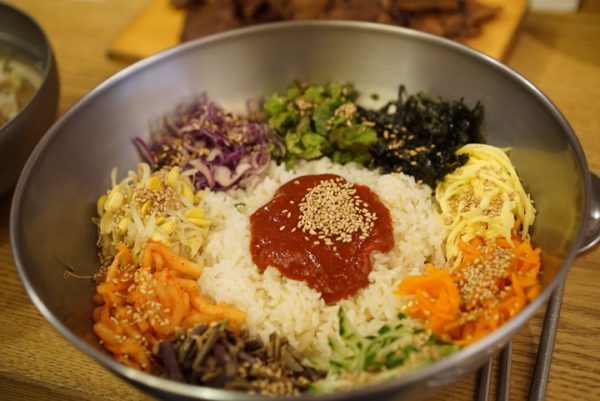
Some of the dishes they serve are tofu, tempeh, vegetarian kimchi, rice, potatoes, and bellflowers. These choices are served in elegant, traditional meal setting and seating.
Address: 30-13 Insadong-gil, Gwanhun-dong, Jongno-gu, Seoul
Unique Korean Vegetarian Dishes
With vegetarianism on the rise in recent years, the Korean culture has greatly expanded its dishes to include non-meat options. While the above restaurants have specialty dishes, there are certain foods to watch for while searching for something to eat. They are 100% vegetarian foods and are served in some restaurants and sometimes street vendors, which are popular on main roads in South Korea.
Kimbap
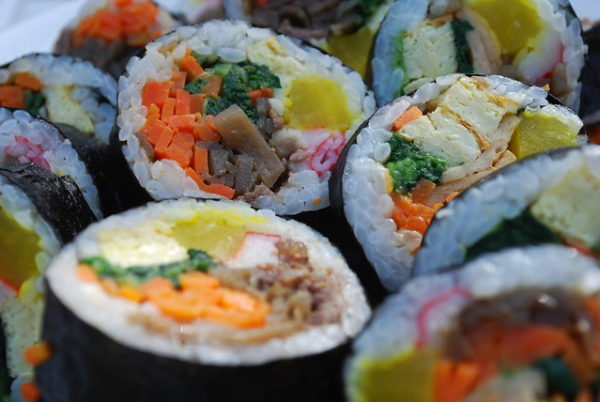
This is a Korean sushi roll consisting only of vegetables and rice that are wrapped in traditional seaweed. It is usually served as a light lunch appetizer or part of a bigger meal.
Japchae
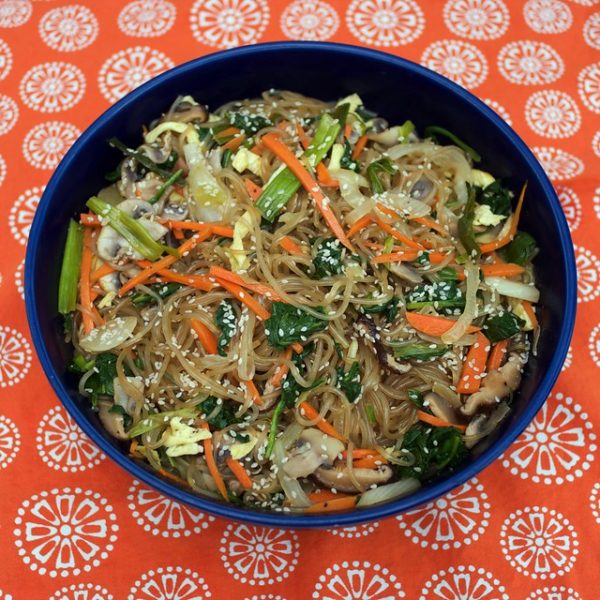
Japchae is a noodle and vegetable dish, where the noodles are made of sweet potatoes. This dish has actually been around since the 17th century. However, it was more commonly known also to have meat. Nowadays, it is traditionally served with only mixed vegetables and typically called “glass noodle stir fry.”
Joomuk-bap
Perhaps one of the most popular of lunches in South Korea, Joomuk-bap is a seasoned rice ball with various fillings. They can be sweet or savory. Veggie fillings are most used, and these are considered very filling and delicious.
Hobak Jook
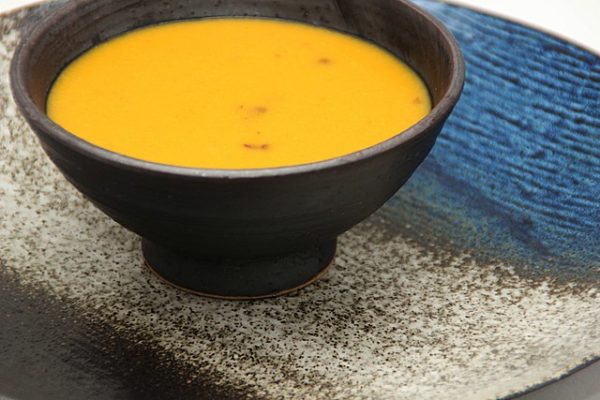
South Korea is known for cold winters, and this dish is perfect to warm up with. It is liked by vegetarians and meat-eaters alike. It is a substantial and sweet porridge dish. It has pumpkin at the base with brown sugar and rice flour, creating a delicious meat-free option.
Pajeon
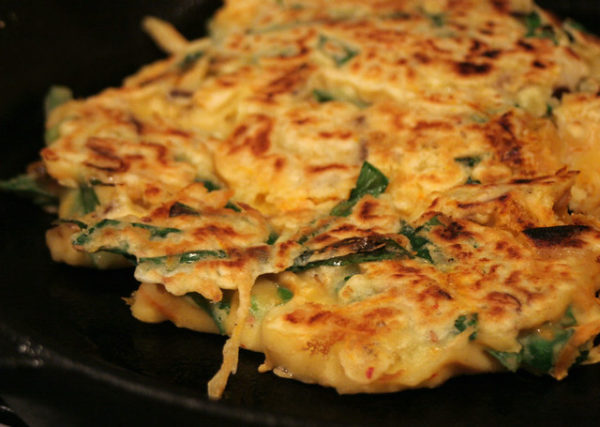
Pajeon is a variation of pancake. Most people associate pancakes with sweet ingredients, however, in the East and in Europe, pancakes are savory. In South Korea, this pancake is made with green onions (or scallions) and various herbs. It is usually made with meat. However, they will serve without animal products at food stalls.
Even though vegetarian foods are not heavily found in South Korea, there are some very good choices to try out. The experience alone is a trip well worth it, and even non-vegetarians can appreciate these unique and delicious menus.